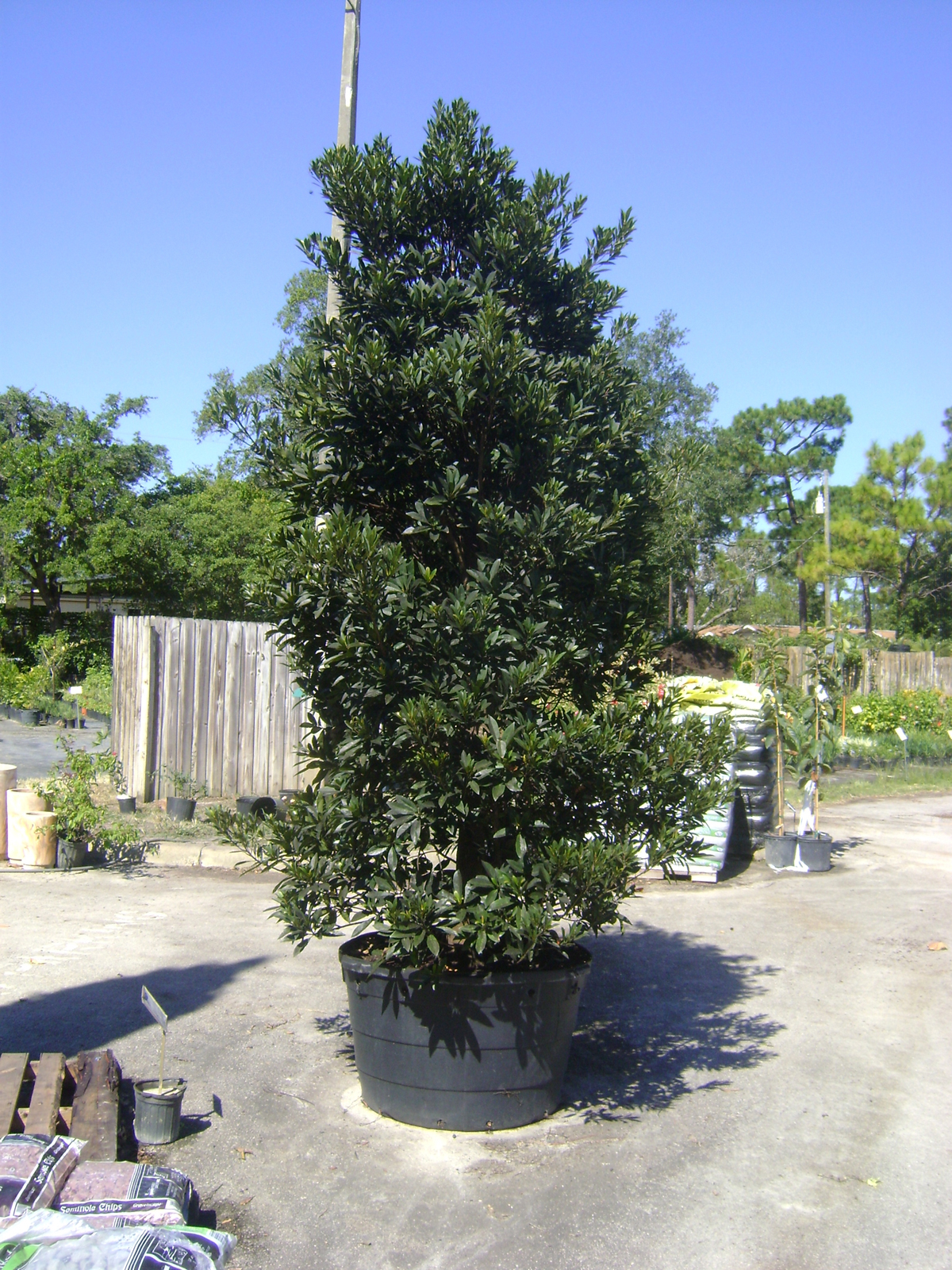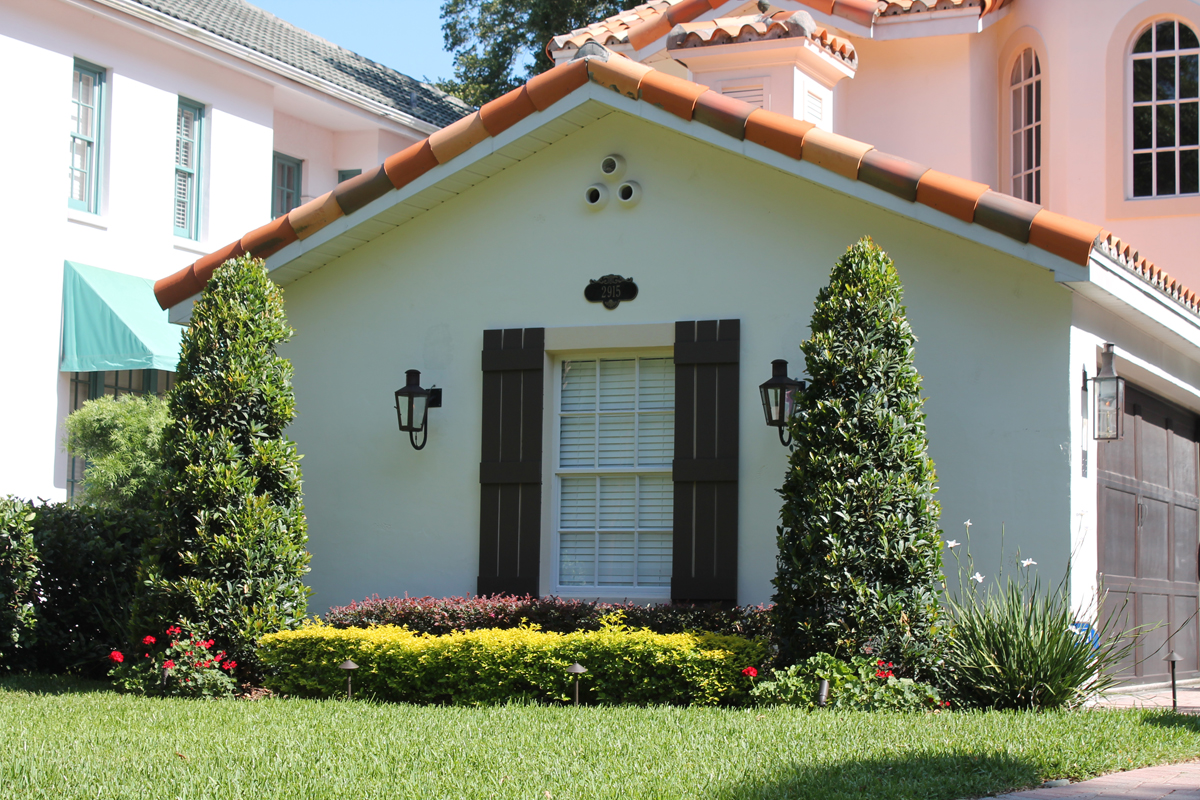The Japanese blueberry has tightly knit branches covered with egg-shaped, leathery leaves. Although mature foliage is dark green and glossy, new growth appears bronze. At intervals throughout the year, spent leaves will turn bright crimson before dropping. The tree is continually producing new growth and is evergreen. In late spring, the tree blossoms with creamy white bell-shaped and fragrant flowers. The small olive-like fruits will not stain sidewalks or patios, making the Japanese blueberry a good choice for parkways or near walkways or porches.
Japanese blueberry does well in balanced, well-drained soils. The tree needs regular watering until the root system is firmly established, usually for the first two or three years. This moderately fast growing tree enjoys bright sunny locations and requires little care. Prune the Japanese blueberry for a uniform shape in formal gardens or allow it to spread naturally for a tropical look.
This ornamental plant can be grown as a shrub or trained into a tree. When growing as a tree, take care to give it enough room to accommodate the crown, which can reach a width of 30 feet. When planted in rows the Japanese blueberry makes a colorful and attractive hedge or privacy screen.


